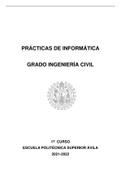Samenvatting
Summary Emotion Science & articles: Emotion And Cognition (6463PS027)
My summary of the book 'Emotion Science' by Elaine fox and articles for 'Emotion and Cognition' for 2022. I made this a year ago by myself and for me this summary was enough to pass. The exam will be in English, hence the English written summary. So it's available for both English & Dutch spoken st...
[Meer zien]














